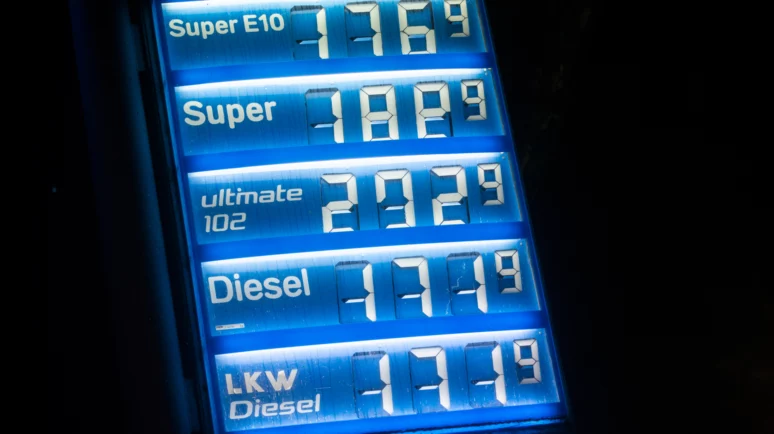Ethereum’s Next Frontier: Mara Schmiedt Unpacks Dencun Upgrade and Its Impact

Alluvial's Schmiedt: Dencun upgrade boosts Ethereum's scalability, security, and efficiency.| Credit: Alluvial
Key Takeaways
- Ethereum’s Dencun upgrade brings major scaling, security, and efficiency gains for Ethereum.
- Liquid staking is key for Ethereum’s future, boosting access, efficiency, and innovation.
- Ethereum faces scaling hurdles for mass use, but Dencun upgrade and Layer 2 solutions show promise.
Ethereum stands on the cusp of its next step with the imminent Sepolia testnet launch for the Dencun Upgrade. With the the keenly awaited Holesky phase to follow, the crypto community is abuzz with anticipation.
This development beckons a deeper exploration of its implications and the transformative potential it holds for the Ethereum ecosystem.
Mara Schmiedt Discusses the Impact of the Dencun Upgrade
To navigate through this significant milestone, CCN spoke with Mara Schmiedt, CEO of Alluvial and a revered figure in the Ethereum space.
Schmiedt’s expertise isn’t just theoretical. Her hands-on involvement with the Ethereum Foundation‘s working group and her pivotal contributions to the Ethereum Launchpad have cemented her status as a linchpin in Ethereum’s ongoing development. Beyond her technical achievements, Mara’s pioneering research on liquid staking, highlighted in her publications “The Internet Bond” and the “Ethereum 2.0 Staking Ecosystem Report ,” offers profound insights into the future of Ethereum’s infrastructure.
CCN: Can you explain the significance of the Dencun Upgrade for the Ethereum network and its stakeholders?
Mara Schmiedt: The Dencun Upgrade combines upgrades to Ethereum’s consensus and execution layer. It will set the stage for significant scalability, security, and efficiency improvements. Among these is the introduction of shard blob transactions (EIP-4844). These make it more cost-effective for rollups to add data to Ethereum blocks.
The upgrade also includes EIP-4788, aimed at reducing third-party oracle risks and smart contract security. Meanwhile, EIP-7514 introduces a maximum entry and exit limit on validators ensuring stability in Ethereum’s active set. In essence, Dencun represents a big leap forward in scaling resilience and performance for the Ethereum ecosystem.
Dencun Upgrade Expected to Boost Ethereum’s Scalability and Security
CCN: How do you anticipate the Dencun upgrade will influence Ethereum’s scalability and security?
Mara Schmiedt: The Dencun upgrade will enable cheaper and faster transactions on Ethereum. In light of Bitcoin’s recent institutional surge enabled by recent ETF spot market approvals and total value locked in Ethereum’s DeFi ecosystem close to scratching the $100bn mark, this scalability-focused upgrade is much anticipated.
The introduction of shard block transactions (EIP-4844) is the first step to enabling Ethereum’s rollup-based scalability plan, also known as Danksharding, that will materially increase the network’s throughput and viability as a mainstream internet technology.
CCN: As someone deeply involved in Ethereum’s development, how do you view the role of liquid staking in the network’s evolution?
Mara Schmiedt: Liquid staking introduces onchain receipts for staked positions. This primitive introduces material benefits from an accessibility, capital efficiency, and innovation standpoint. Liquid Staking Tokens (LSTs) enhance user experience by contributing to network security and broadening participation.
Simultaneously, it unlocks idle capital, reducing friction and giving way to better products and new solutions. The fact that 44% of current Ethereum staking relies on liquid staking solutions underscores its growing appeal for both platforms and users. Liquid staking is not just a trend. It’s a dynamic force shaping Ethereum’s future, enhancing accessibility, efficiency, and creativity in the blockchain space.
The application of onchain receipts in structured products is an interesting institutional use case that I’m personally excited about and that Liquid Collective is actively working towards enabling.
CCN: Reflecting on your work with the Ethereum Foundation and the Ethereum Launchpad, how do you assess the current state of Ethereum compared to its initial visions?
Mara Schmiedt: Ethereum has gone through a tremendous evolution in the past few years. The developer community’s resilience and adaptability have remained evident in the seamless execution of numerous upgrades and improvements.
The transition from Proof of Work to Proof of Stake was significant. In many ways, it was executed flawlessly, considering the scale and distribution of the system and its contributors.
Ethereum continues to lead the charge as a common settlement layer and smart contracting platform, despite many attempts to challenge its position. It’s interesting to consider that providing security to Ethereum in the form of staking may, in fact, become one of the catalysts for more widespread institutional adoption in the future.
“The Internet Bond” Concept and Ethereum’s Staking Evolution
CCN: The “Internet Bond” you’ve researched extensively suggests a new paradigm for staking. Can you elaborate on this concept and its implications for Ethereum?
Mara Schmiedt: Staking involves collateralizing value for the right to provide security to a network and earning an incentive in return for doing so. Considering that the internet, as we know it today, is neither set up to be decentrally operated nor user-owned, the concept of being able to freely contribute and own a part of public internet infrastructure is fundamentally revolutionary.
Staking represents an agreement between a lender of resources (users) and a borrower of resources (the protocol) that resembles the relationship between counterparties in the bond markets. However, unlike traditional bond structures, internet bondholders are lenders of capital, labor, resources, and the network’s owners at the same time.
Taking this analogy further, it’s interesting to then consider Ethereum’s reward rate, the risk-free rate equivalent and the benchmark for valuing the cost of trustless value transfer. These properties may render Ethereum Internet Bonds appealing to both traditionalists seeking stability and forward-thinkers embracing the potential of cryptocurrencies.
CCN: What were the key findings of the Ethereum 2.0 Staking Ecosystem Report? How do they inform the future of staking on Ethereum?
Mara Schmiedt: The Ethereum 2.0 Ecosystem report was written in 2020 to inform the community and its builders about anticipated user behaviors and product feature requirements for staking. We surveyed 287 different participants in the market, and some of these findings are interesting when considered against the current progress and state of staking.
Contrary to expectations, the number of at-home validators has not grown significantly. This is mainly due to high entry requirements and technical challenges. On a brighter note, liquid staking emerged as a solution. This has enabled people with less than 32 ETH to stake and ensuring their assets remain liquid.
These developments suggest Ethereum’s staking ecosystem is an evolving ecosystem that’s responsive to the needs and barriers faced by its community. This evolution not only broadens the horizon for Ethereum’s staking landscape but also strengthens its foundation as a more inclusive, accessible, and resilient network.
Challenges, Opportunities, and the Significance of the Dencun Upgrade
CCN: What are the biggest challenges and opportunities for Ethereum?
Mara Schmiedt: Ethereum has faced scalability issues. These have served as a credible blocker to mass adoption and accommodate the growing number of users and transactions. The combination of Ethereum’s rollup-centric scalability model, the upcoming Dencun upgrade, and the rapid proliferation and transaction growth on L2 is pointing to an optimistic future.
Scalability is just one side of the equation. In order to reach mainstream adoption, meaningful institutional adoption, widespread accessibility, and clear regulatory frameworks are necessary.
CCN: What message would you like to convey to the Ethereum community as we approach the Dencun Upgrade?
Mara Schmiedt: The Dencun upgrade is a significant milestone in Ethereum’s journey. It represents a step forward in addressing some of the key scalability challenges facing Ethereum today. The success of Ethereum relies on the active participation of its community members. I’d encourage everyone, whether you are a developer, user, or investor, to continue contributing your expertise and perspective to help shape the future of Ethereum.


